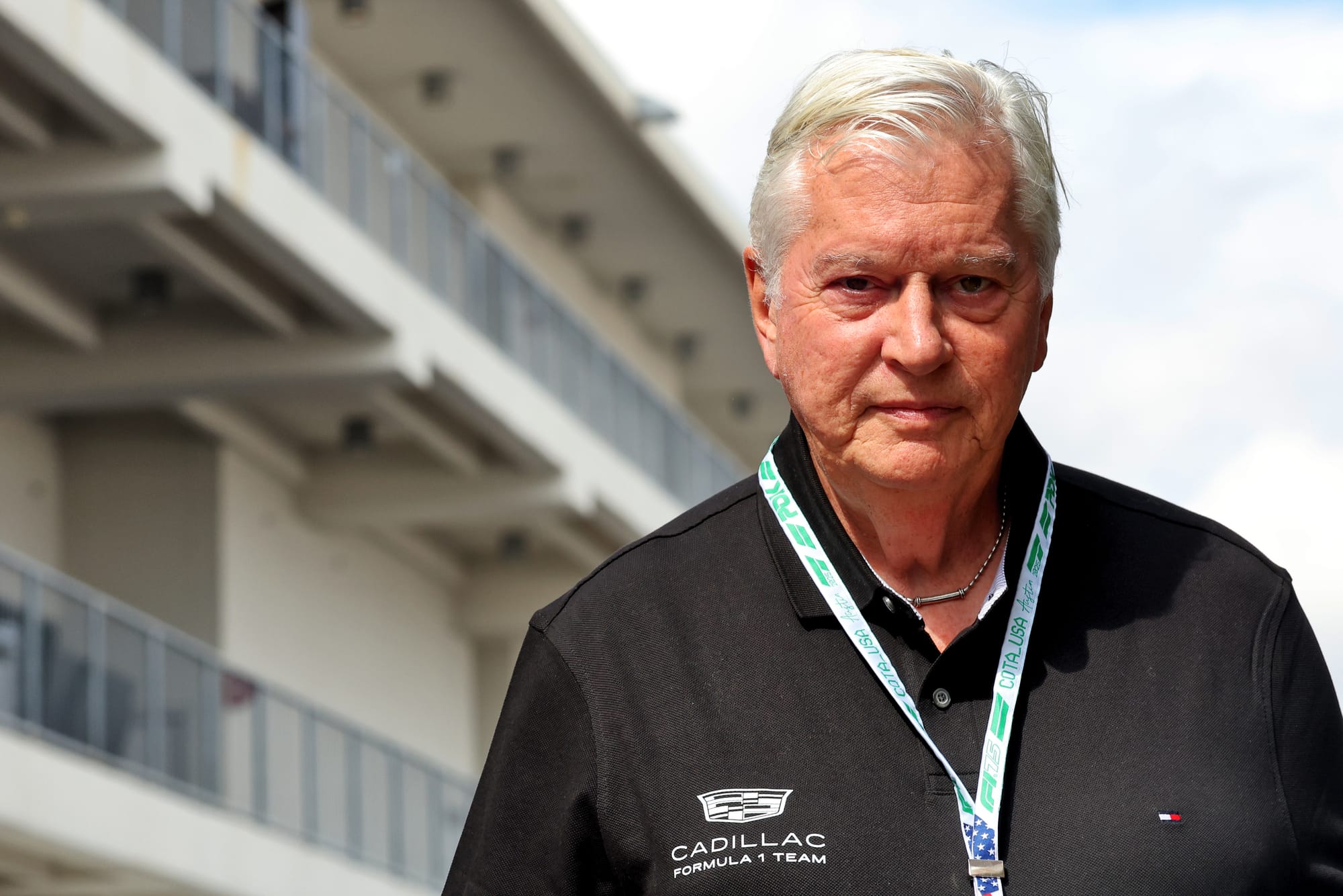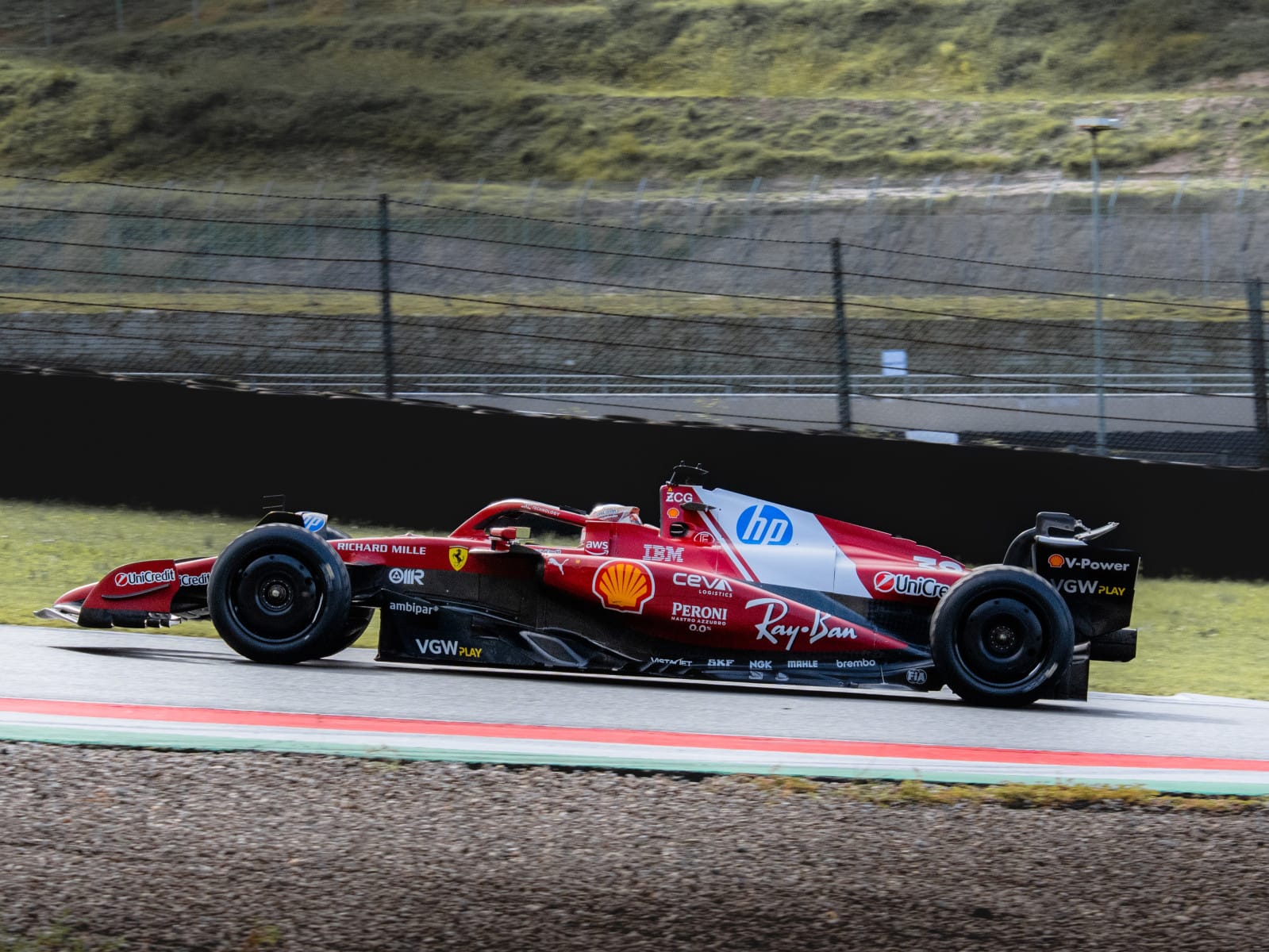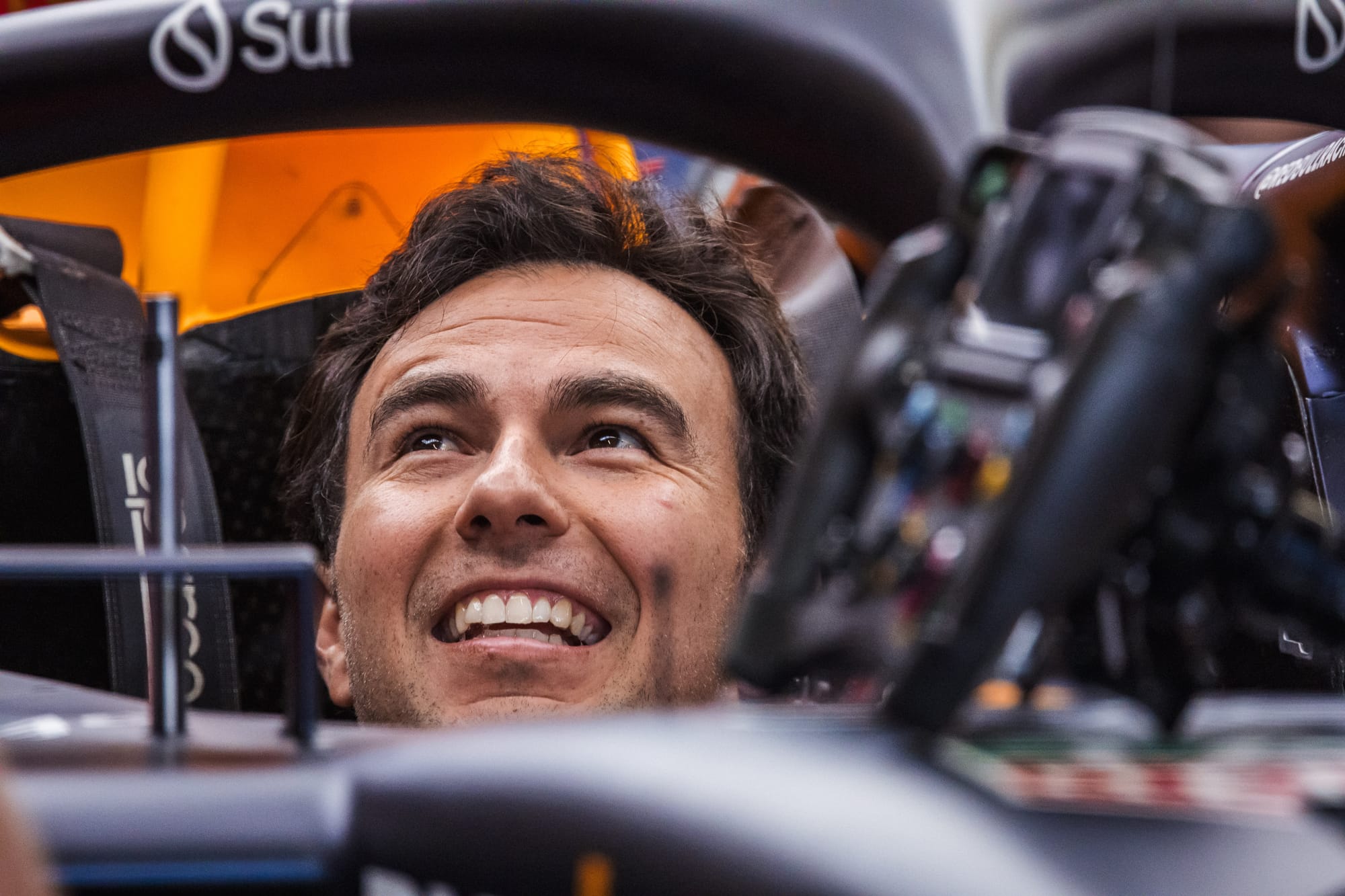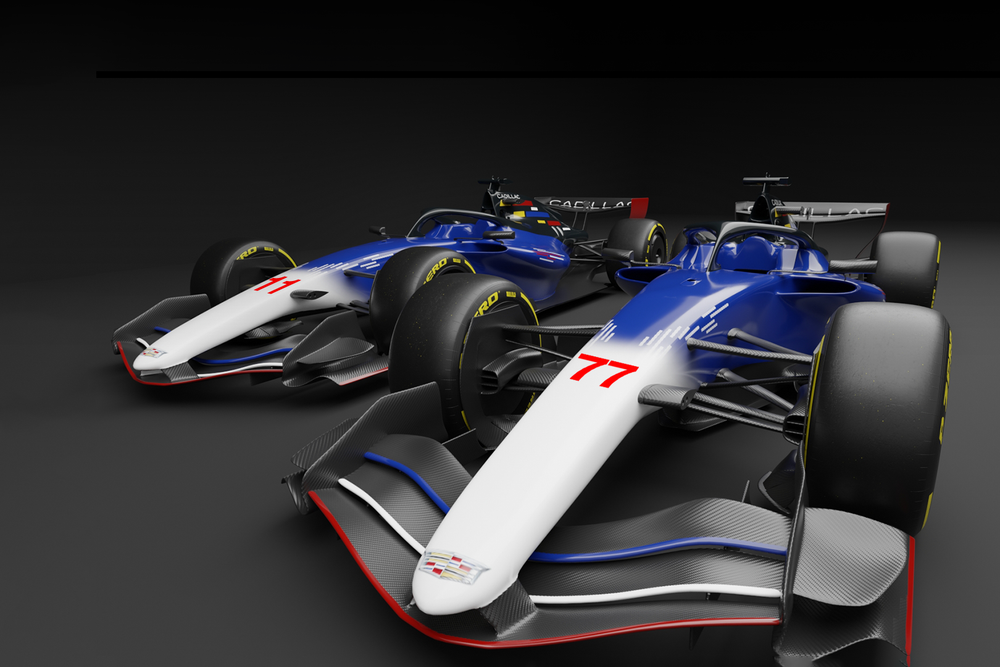Formula 1 reality is fast approaching for the Cadillac team – with little more than 100 days to go before it joins rivals at the first pre-season test in Barcelona.
There is no escaping that there is a huge job list still to tick off. This includes a looming crash test, sending its freight off next month to Australia, hitting some very aggressive aero targets and continuing a "frightening" amount of recruitment.
Plus, there is a need to fast-track building its relations with engine partner Ferrari.
But while it is all hands on deck right now, executive engineering director Pat Symonds and GM’s vice president of Global Motorsports Competition Eric Warren offered us some fascinating insights ahead of the United States Grand Prix about just where things are at.
Here are the key takeaways.
The first team to complete a crash test?
Coming from so far back compared to every other F1 team means that Cadillac has to play it safe when it comes to making sure it hits all its design and manufacturing deadlines.
It is not in the state of more experienced rivals in being able to hold things back until the very last minute to eke out a final bit of performance. One mis-step within its organisation and it risks not getting a car on track at all.
That is why the team could well be the first to put its 2026 chassis through the mandatory FIA crash tests over the next few weeks.
The timing for the delivery of chassis 00, as Symonds calls it, was made a long time ago – and is the result of the squad not wanting to be too bold too early.
As Symonds said: “We're homologating our chassis through crash testing in the next few weeks. That's a lot earlier than I've ever done it before in my career, but it's absolutely the right thing to do, because we need to make sure everything's in place.
“People remember a few years ago, one team [Williams, 2019] missed the start of testing because they just hadn't got all their systems in place. We can't afford to do that.”
It is not just crash test deadlines that are looming. Cadillac’s first batch of sea freight leaves on November 18 for the opening races of the season.
Symonds said that the first fire-up of the car is likely before Christmas, with a shakedown planned for early January prior to the pre-season test that takes place in Barcelona from January 26.
Very aggressive aero targets
While committing early to getting its chassis ready has some minor implications in terms of final packaging, Cadillac does not think that it will have a big impact on its overall performance.
That is because so much of the car’s aerodynamic performance will be down to floor, bodywork and wing designs – areas where Cadillac says it has some bold ambitions.
As Symonds said: “We've set a very aggressive target where we want to be aerodynamically at the start of the season. Very aggressive. Let's see how we get there.”
While nobody knows right now what others are up to – so there is an element of guesswork in terms of what is an aggressive target – Symonds explains that it is basing its numbers on some FIA predictions.
“The FIA gave some indication to all the teams of where they expected the downforce and the drag to be at the end of 2026,” he said.
“Now, if you remember, they did the same for the 2022 car - and in fact, the team's exceeded that by a long way. I think this time the FIA, in the knowledge that they underestimated last time, they've put a target that, to be honest, I think it's quite realistic.
“But you don't aim at easy targets. That's not the way to go racing. So we just simply said: ‘Okay, that's the target the FIA has set. Let's go x points above that.’”
There's no 'mental separation'

While much of the Cadillac operation has been building up at its Silverstone base, it would be wrong to label the team as a British one running an American manufacturer’s badge.
There is an awful lot of involvement from parent company GM, plus factory involvement from both Charlotte and Fishers near Indianapolis, that is being expanded and will have a bigger and bigger involvement in the F1 operation.
Symonds admitted that it was “frightening” creating everything up from scratch, but he is pleased with the progress as the squad currently has a 426 headcount.
Splitting operations across many sites (including using the Toyota windtunnel in Cologne) goes against the grain amid a trend for teams to try to bring everything under one roof, but Symonds does not see it as a problem at all.
He also laughed off suggestions that there was no way an F1 operation could be run out of the United States.
“People saying that are wrong on all accounts,” he said. “This is an American team. This is based in America, but it's expedient to get things going, to use some of the knowledge that's in Europe.
“I attend numerous meetings in a day, and there are a lot of people on my screen, and I really am not aware of whether they're in Charlotte or whether they're in Cologne or whether they're actually sitting next to me,” he said.
“Doesn't matter anymore, does it? We can do these things. It doesn't worry me in the slightest that we have physical separation. We don't have mental separation.”
Cadillac won’t buy more Ferrari parts
Well aware that it was going to be impossible to get its own power unit ready for 2026, Cadillac entered a customer relationship with Ferrari for the supply of engines.
But what was not clear early on was whether the relationship with Maranello could expand into something greater – perhaps like Haas has where it takes as many other car parts as it can.
Speaking about the lines of their relationship, Symonds has explained that it will not be taking the easy route and buying a lot of bits.
“We're not doing it in the model of some of our competitors,” he said. “So we're taking the engine, and we're taking the gearbox cassette.
“But the whole of the gearbox carrier, the rear suspension, the front suspension, and indeed all those parts that some other teams are buying from suppliers, we're not doing that. We are designing from scratch.
“I'm a great believer in being in charge of your own destiny. And I think if you are a customer team, to me, that's not the way to win the world championship.”
Cadillac had staff at Ferrari TPC tests

Cadillac does not have the luxury of having a current F1 car that it can go testing with nor can it simply go testing with a rival team's car alone.
While that is not such a huge disadvantage when it comes to preparing for the 2026 rules, there are benefits it would bring in terms of helping people know how to work together if they can be there together at a track.
So in a bid to get people more integrated, and especially better understand how to integrate with Ferrari, there has been some joint work done at recent TPC running.
As Symonds said: “We've been able to attend some of their testing of previous cars, just so we can get mechanics sort of working together as a team and things like that.
“There are simple things, just like seeing how you need to bleed the hydraulics on their system, how you refuel the car, and all that sort of stuff.
"It was very good from a team building point of view, and also good from some of the relatively routine sort of operational aspects.”
A further joint TPC day is planned soon.
Perez is already giving simulator feedback

It’s been well documented that Cadillac has been running simulations of race weekends from both Charlotte and Silverstone so all its factory operations are up to speed before the first race.
But the team has also been running its proper F1 simulator – with the helping hand of 2026 driver Sergio Perez already offering some feedback.
Symonds says that one area where he has pushed the team has been in feel from the steering wheel.
“Eric's [Warren] group, they're designing the power steering and Checo in the simulator, he said, ‘I want a slightly different feel on the power steering.’
“It's great because Eric's group can just get on and tune that power steering to exactly the way that Checo wants it.”
While other driver Valtteri Bottas is still under contract to Mercedes until the end of the season so is not available for simulator running, there has been a small bit of contact allowed with Cadillac.
Symonds added: “Mercedes have been actually very helpful with us, and allowed us to talk to Valtteri and get a few things sorted out, like driver fit, and there's sort of preferences of the steering wheel and all these sort of things.”
V8 talk won’t change GM’s engine plans…yet
While part of the agreement for Cadillac to get a 2026 entry was that it committed to entering as an engine manufacturer from 2029, that timetable is no longer so certain now.
The FIA has been openly debating with teams and manufacturers about the idea of a future switch to V8 engines for around that date – with 2031 likely and even 2030 possible.
A move then would make it nonsensical for Cadillac to push on spending hundreds of millions on a turbo hybrid for 2029, only to have to throw it in the bin one or two years later.
But this does not mean it is going to abandon work on its engine right now. From GM’s perspective, it is important it keeps pushing on at its facilities so it is primed for the future – and can respond if the rules switch.
As Warren said: “We've been working for multiple years, and we will pivot at the time it's necessary to pivot.
"We certainly are contributing to that discussion [with the FIA], but it's no different to any other kind of vehicle programme that we run, or even with the car."



